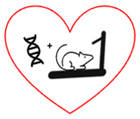Gene therapy and the role of exercise
Article title: One episode of low intensity aerobic exercise prior to systemic AAV9 administration augments transgene delivery to the heart and skeletal muscle
Authors: Christina Pacak, Silveli Suzuki-Hatano, Fatemeh Khadir, Audrey Daugherty, Mughil Sriramvenugopal, Bennett Gosiker, Peter B. Kang, and W. Todd Cade
Journal: Journal of Translational Medicine (Link to Article)

Dr. Christy Pacak (University of Minnesota Medical School) and BSF’s Scientific and Medical Advisory Board (SMAB) member Dr. Todd Cade (Duke University School of Medicine) recently published a new article on the role of exercise in mice and its potential to make gene therapy more effective. In this exciting paper, mice with low tafazzin levels (i.e. Barth syndrome knockdown mouse model) were exercised at a low intensity for 30 minutes just prior to receiving a form of gene therapy called adeno-associated viral vector or AAV for short. One of the most important challenges in AAV gene therapy is to find ways to achieve good expression of the target gene with lower amounts of AAV, which can have safety concerns at higher levels. They found that, four weeks after receiving AAV, the Barth syndrome mice that exercised before receiving the gene therapy showed better TAFAZZIN gene expression in the heart and skeletal muscles, key targets for the treatment of Barth syndrome. One of the most important findings in this paper is the demonstration of improved mitochondrial function (energy source for cells) in the exercise group compared to mice that received AAV but did not exercise. These results mean that fatigue, one of the key features of Barth syndrome that impact quality of life, may also be similarly improved. Future work from this team will look at how different exercise routines or different versions of AAV impact TAFAZZIN gene expression and mitochondrial function.



